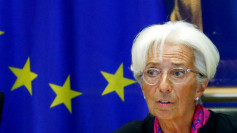In the face of the latest coronavirus outbreak, the Federal Reserve has initiated more than $1 trillion liquidity program to boost capital markets, and is now a step away to resuming its crisis-era strategy of acquiring assets in a mechanism called quantitative easing.
In fact, the Fed made an immediate cut of 0.5 percentage points just the other week against its interest rate goal. Yet central bank officials seem to think that the economy needs additional cushioning against the negative impact of the disease.
These changes are being imposed to address highly unusual distortions in the Treasury financing sector linked to the outbreak, the New York central bank disclosed in a statement.
Despite the uncertainty of the market that stems from the latest coronavirus and an oil price drop, the US Treasuries have shown symptoms of cracking. In normal dynamics of risk-off, yields on US government debt continue to decline as the stock market rises.
Yet Treasury yields have risen in recent days following extended stock sell-offs, raising fears that liquidity was drying up in a crucial corner of finance widely seen as one of the most liquid markets.
This is quantitative easing on a scale and with unparalleled velocity. The Fed is attempting to stop a financial tsunami that threatens to drown risk assets and plunge the planet into deep recessions. US stock prices, which dropped by nearly 10 percent at Thursday's lows, regained much of their lost ground.
United States President Donald Trump has pushed the Federal Reserve to lower interest rates to tackle the financial dislocation that the outbreak caused. Nevertheless, he has also often criticized Powell, who, at Treasury Secretary Steve Mnuchin's request, nominated him for the position in 2017.
The sluggish, slow-moving central bank, led by Jay Powell, who "raised rates too quickly and fell too late, will get our Fed interest rate down to levels of our competitor nations," Trump wrote Tuesday on Twitter.
Following the announcement that stocks were off their lows and some of the losses were pared as the market digested the movements. Many on the market were doubtful about the change being enough, and also about whether the Fed itself had the right resources to reverse the current downtrend in the economy.
Meanwhile, economists scratch their heads trying to find out why counterparties hedge from the Treasury sector. At any rate, dealers seem to change their attention away from the U.S. Treasury market to help move their balance sheets elsewhere.






